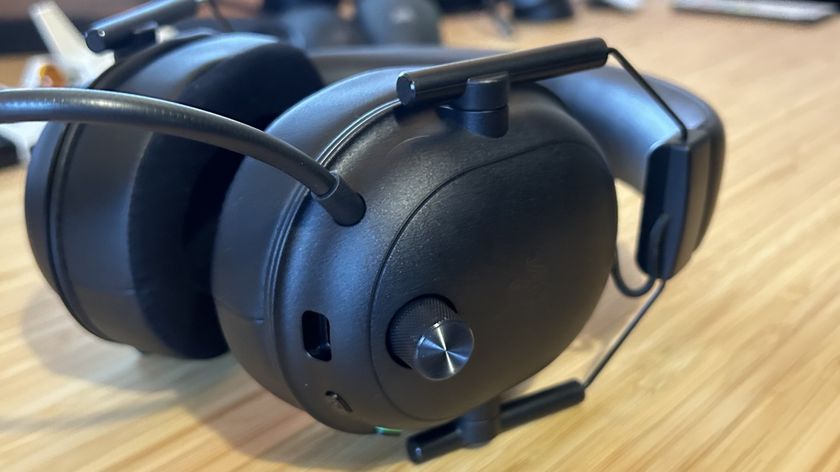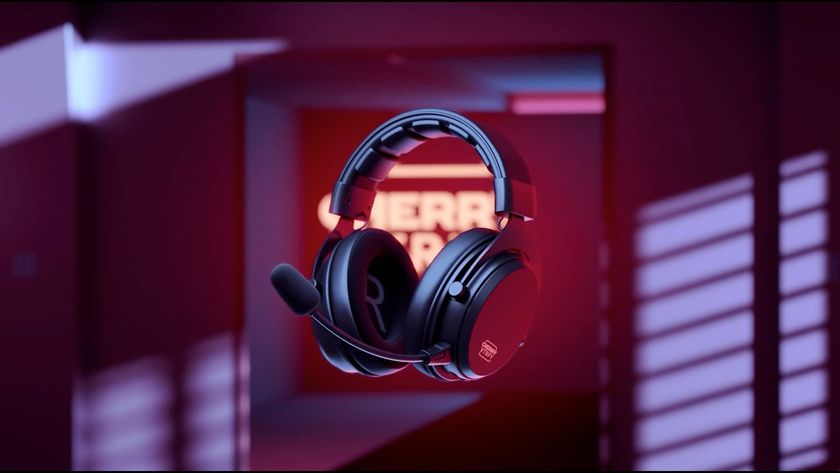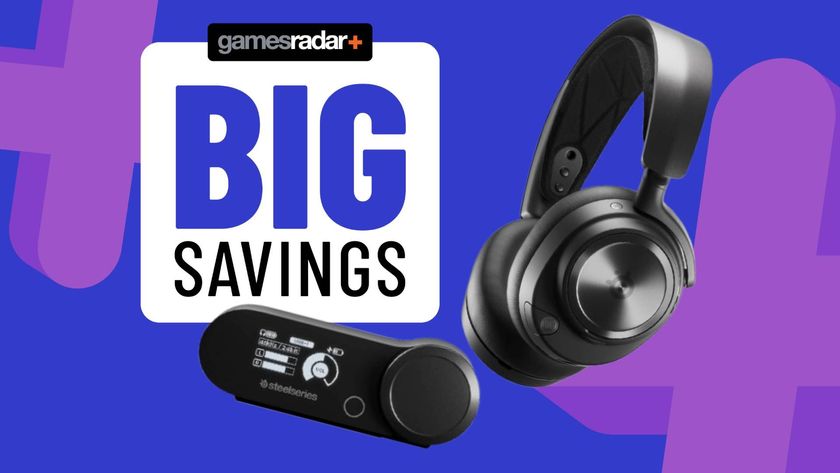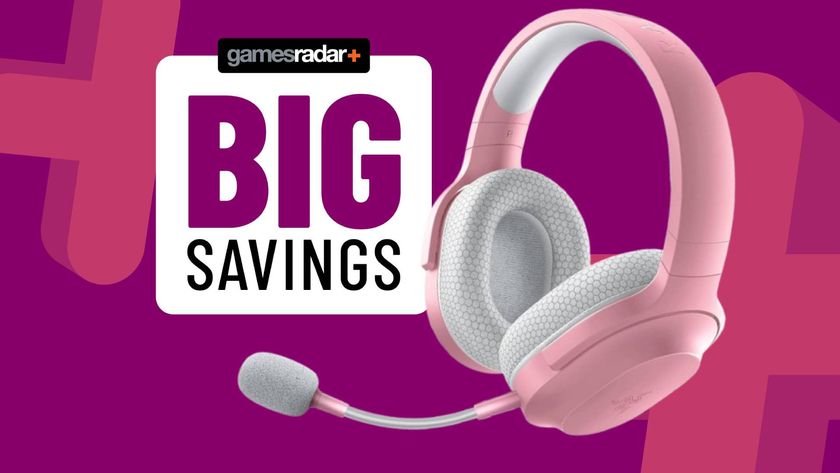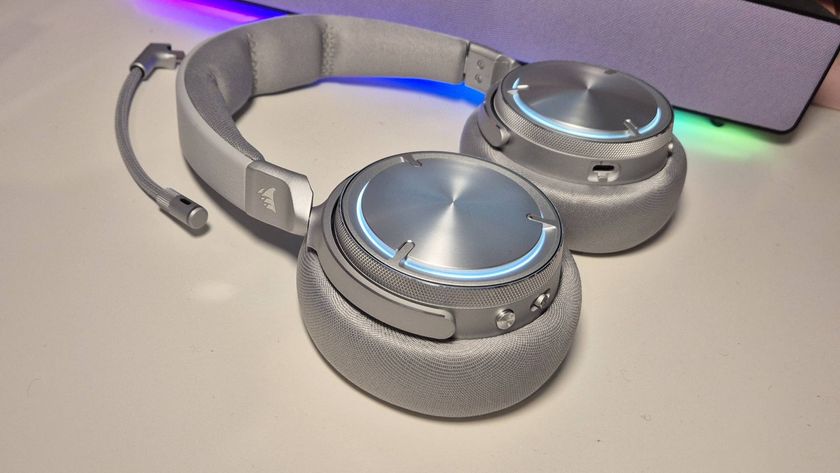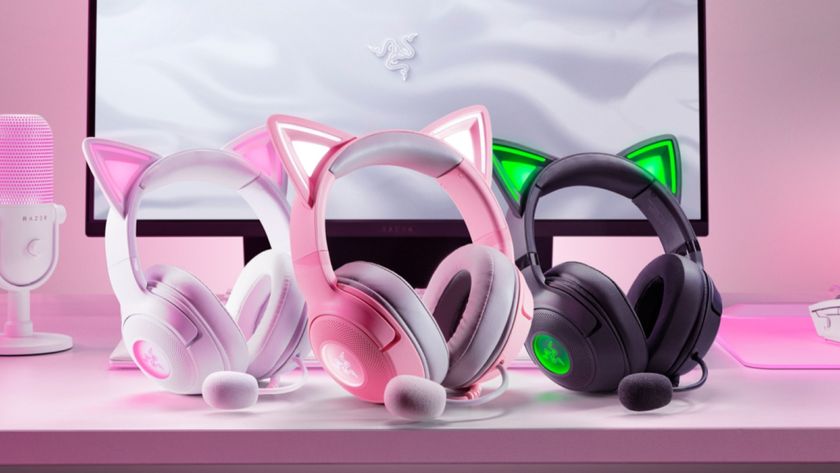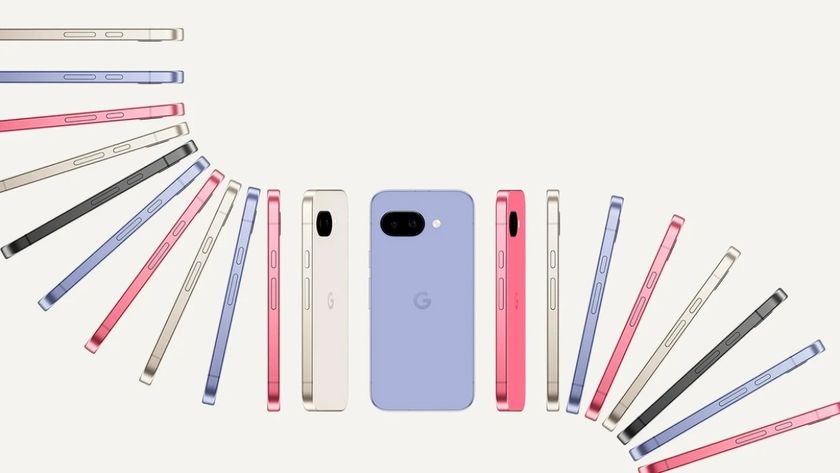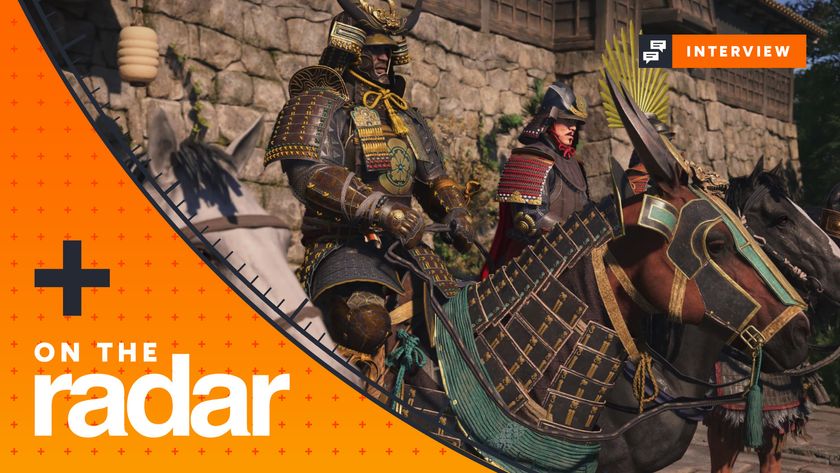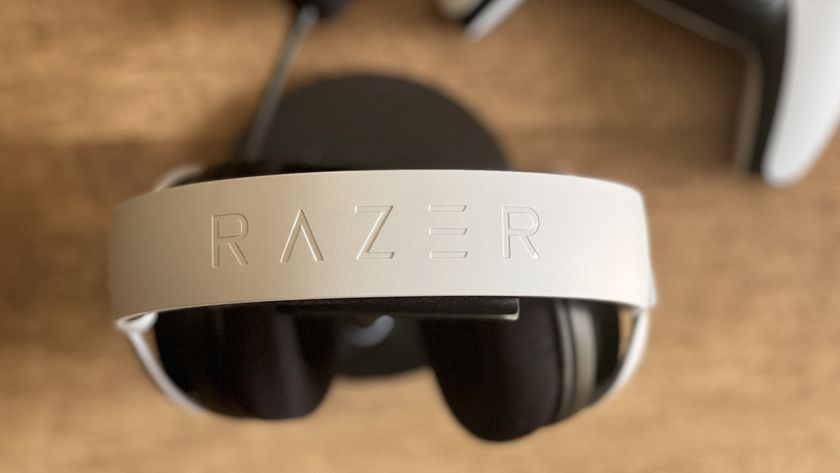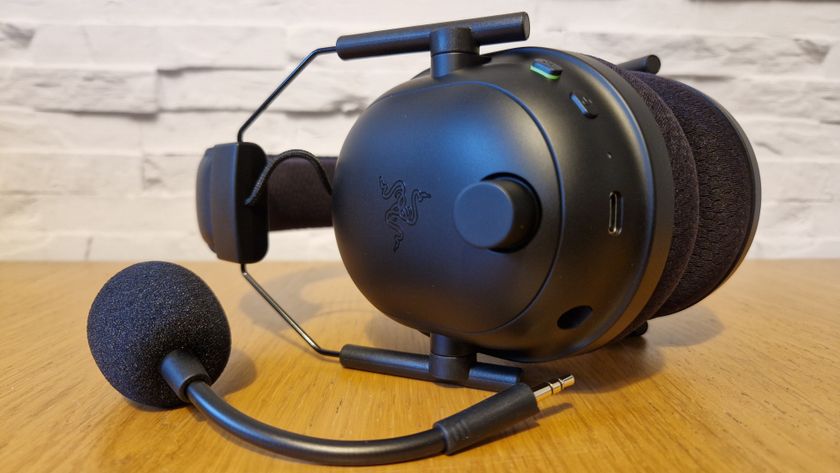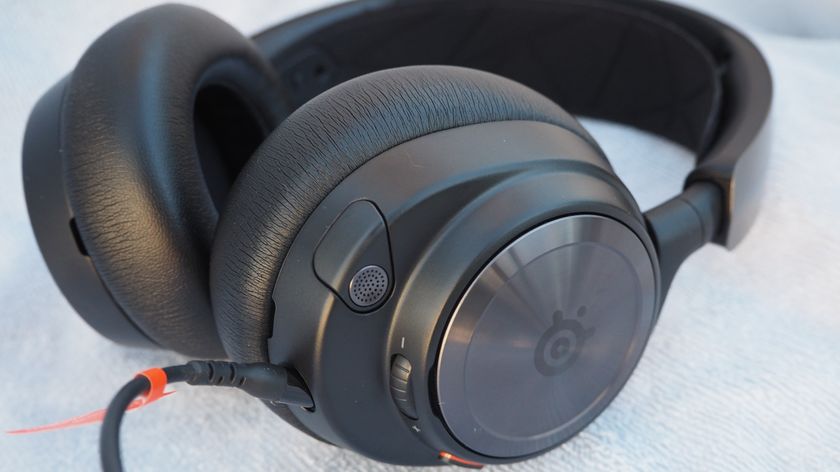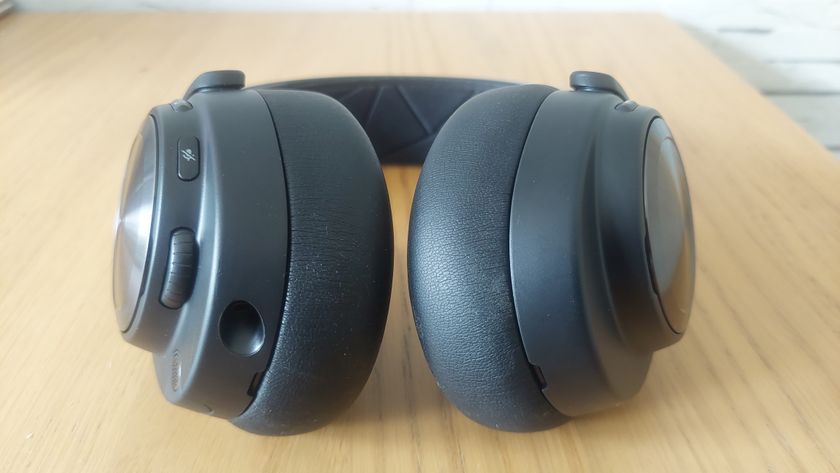How we test gaming headsets on GamesRadar
Our full gaming headset testing process
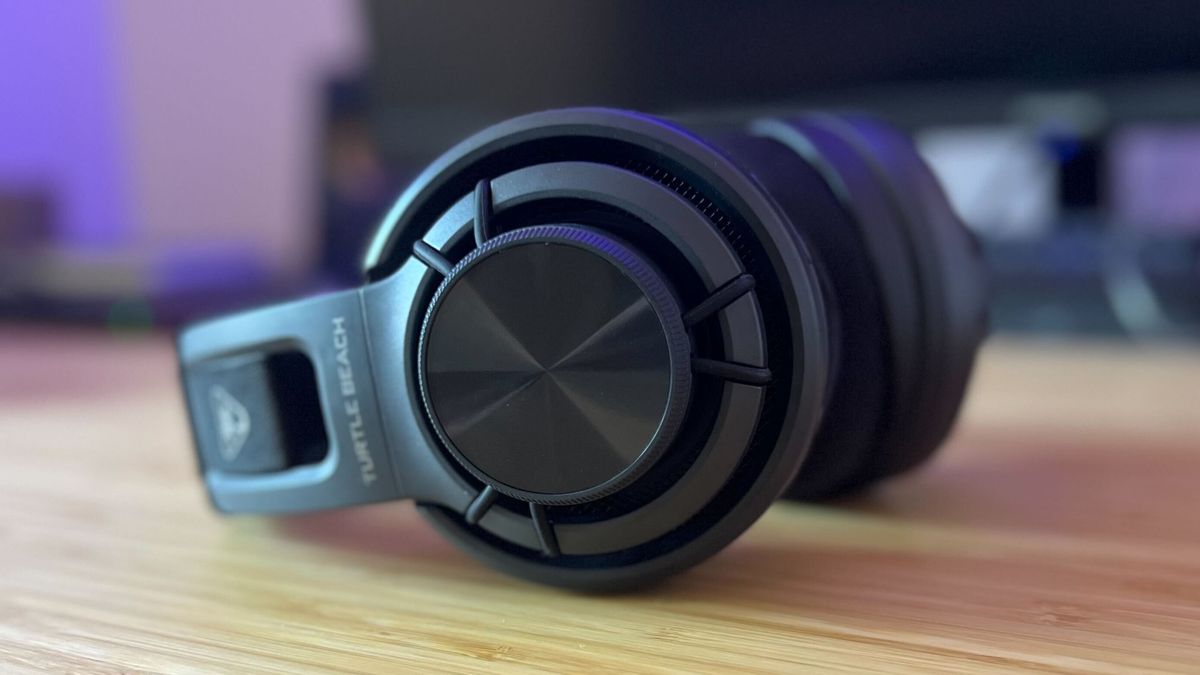
Gaming headsets have come a long way in a short space of time. Surround sound, fancy driver materials, new charging and connectivity features, and innovative headband designs have dominated the industry for years now. That means the way we test gaming headsets has to evolve as well.
We've always got a new set of cups on the noggin, testing hundreds of devices to find the best gaming headsets on the market right now. While they often look similar, though, headsets really do come in all shapes and sizes. That's why we have a strict test procedure to ensure we're accurately exploring all possible use-cases and features on offer. We evaluate each gaming headset that crosses our desks based on design, features, and performance before wrapping it all up under the banner of value for money. That's because each device is tested within is price range - we're not comparing high-end models with budget ones, but a $400 headset is going to need to work a lot harder to impress us overall.
Most importantly, we live with these headsets. They don't stay locked in an office outside of the usual 9-5, they become our daily drivers for all play, work, music, and streaming. That way we can work out exactly how well they slot into real setups, and how they fare for other applications as well. After our initial test period (two weeks at a minimum), these devices stay in our rosters. Where possible, we keep them on-hand for cross referencing against newer releases and, ultimately, to keep our recommendations relevant years down the line.
How we test gaming headset design
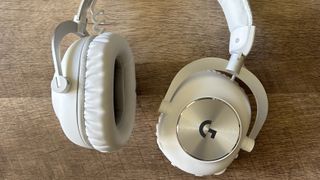
Design is subjective, but there are a few pillars of good headset shape, build, and aesthetic that go a long way to helping us quantify a device's construction. The design sections of our reviews focus on how well a gaming headset has been made, the quality of the materials used, the ultimate comfort of the device, and the way it looks when worn.
When testing the build quality we're looking for any early indications of problems down the line. Often, this comes in the form of a pinched earcup cushion, a too-rigid headband, creaking, or overly flexible hinges. Within this, we're noting the materials used across the main chassis (usually the thickness and flexibility of the plastic), how well the ear cup cushioning is attached to the main frame, the hinges and joints around the struts connecting the earcup to the headband, and the microphone connection (be it detachable or flip to mute). This is more than a test of durability, though, we're also testing the feel of the headset - whether the materials used justify the price tag, and what impact they might have on overall comfort or useability.
Of course, there's no point in having a rock solid headset if it's a nightmare to wear. After just a couple of days worth of testing we're able to accurately judge the headset's level of comfort - especially if that level is especially low. We're taking particular note of temperatures inside the ear cup, the amount of padding on each side, the adjustability of both the headband and cup swivel, the overall weight while wearing, and the size of the cups themselves. Tell-tale signs of an uncomfortable headset are pinching around the top of the ear (the cup is likely too small or the clamp force too high), pressure along the crown of the head (the headband isn't adjustable enough or doesn't feature enough padding), and increasing temperatures.
While they're not going to have an impact on your overall sound quality, aesthetics also play a large role in our testing. More and more gaming headsets feature versatile Bluetooth connections these days, which means they're often used in place of regular headphones by those looking to make the most of their purchase. That's why we pay special attention to the silhouette, available colorways, and RGB design elements within each headset. A headset isn't necessarily bad if it has a particularly 'gamerfied' (angular, large, often protruding) shape but it will make a difference to where and when you use it.
Sign up to the 12DOVE Newsletter
Weekly digests, tales from the communities you love, and more
| Build quality | Build quality, materials, ear cup cushioning, flexibility, hinges and joints, microphone attachment, storage and transport |
| Comfort | Temperature, padding, adjustability, weight, size |
| Aesthetics | Form factor, colors, RGB |
| Ease of use | Control placement, cable length |
How we test gaming headset features
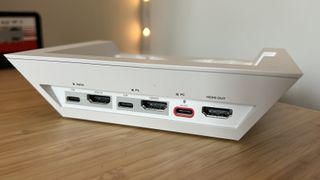
Gaming headsets are adding new features every year in an attempt to stand out from the rest of the market. From KVM switching HDMI ports to specialist game profiles tuned by sound engineers, there's a whole roster of potential features we could be testing for. Each headset's unique features are fully explored across all relevant use-cases during our testing period, but there are also a few staples we're always on the hunt for as well.
First up, we're pretty ruthless about connection. Unlike controllers, for example, a gaming headset's wireless or wired connection type is going to inform exactly what it can be used with - and that can be deal-breaking for some. There are far fewer wireless gaming headsets compatible with an Xbox than PS5, for example, and Nintendo Switch needs a USB-C receiver to run in handheld mode rather than a USB-A (though docked play is the other way around). Even wired connections have their differences - some PC headsets prioritize a USB cable over the more flexible 3.5mm jack. Beyond working out exactly which platforms a device will run with, though, we're also looking for newer Bluetooth features like dual connection modes and simultaneous connections. Because we live with every headset we test, we can also make sure that switching between these connections is intuitive and seamless.
The vast majority of headsets feature onboard controls, so we're always making sure that the control selection makes sense for the type of headset we're using - and that all buttons and scroll wheels are easily navigable via touch. We're looking for volume, mic mute, chat mix, connection switches, and any additional programmability in these features.
Once we've covered compatibility and controls, we take a look at the battery. The first thing we do with every gaming headset we test is take it out of the box and throw it on charge. Starting from a full 100% battery we run the entire charge all the way down through everyday use, paying close attention to timings. That way we can accurately explore how well the battery will actually last in real-world scenarios, whether that's two weeks of evening play sessions or a work-week of all-day use. We run this test across both 2.4GHz and Bluetooth connection modes. Beyond actual battery life, we're always exploring the ease of charging (whether the device uses a dock or a cable, and if that cable can be easily replaced with a different one), charging speeds, and power saving features.
Software is a biggie. Every brand has its own suite of software features, housed in a separate downloadable program. We're testing the navigability of all menus as well as the CPU load of the program itself. Of course, there's also the question of exactly what this software allows you to do. We're checking for the range of EQ settings, availability of presets, number of onboard profiles, microphone personalization options, and compatibility with other peripherals.
Finally, we hook up the mic and jump on comms. We're looking at the type of microphone used, whether it offers any noise cancellation, its attachment style, and side tone customization options here.
| Connection | Type, simultaneous connection, dual connection, wired port, reliability and speed, power |
| Controls | Volume, mic mute, chat mix, connection switch, programmability |
| Microphone | Type, noise canceling, attachment style, side tone |
| Software | EQ, preset availability, number of onboard profiles, mic personalization, CPU load, ease of use, compatibility |
| Drivers | Material, size, type |
| Battery | Lifespan, ease of charging, charge speeds, power saving features |
| Isolation | Passive isolation, active noise cancellation |
How we test gaming headset performance
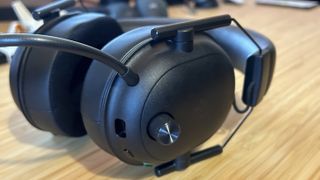
Performance is the hardest element of our testing process, as it's a largely subjective area. Some may prefer a bass-heavy soundstage while others will consider a more treble-defined driver to be 'better' overall. To navigate this personal preference we test all headsets across a set of seven games where compatibility allows.
Horizon Forbidden West is used to test the definition of mid and low ranges when in a clustered soundstage but also to explore environmental ambience and the size of that soundstage in a wider scene. We test this by stealthing around larger machines, paying close attention to the balance between machine sounds and ambient effects, and spending time in diverse-sounding areas, like forests and beaches.
Apex Legends and CS:2 are used to test directional accuracy, soundstage imaging, microphone clarity and chat mix / sidetone features - usually through bot training runs to ensure parity between tests.
Marvel's Spider-Man: Miles Morales is used on PS5 to test the headset's handling of directional 3D audio, while also testing the detail and balancing performance in busier mid-range soundstages. This is accomplished in the main mission Time To Rally, walking through the street scene.
Doom Eternal arena battles are used to explore the headset's handling of a powerful low-range and to check for any distortion in this bass, especially at high volumes. Not only that, but this is also an excellent game to test the depth of the soundstage itself.
The Last of Us Part 2 allows us to test environmental spacing and balance in a smaller soundstage than that of Horizon Forbidden West. We're looking for ambience and detailing in a close-quarters space here, using the mission The Descent.
Where applicable, we also test across Super Mario Sunshine. The lighter melodies and more intricate soundtrack elements allow us to explore the full range of the treble, noting the energy of these higher ranges and detailing.
Overall, we're testing a gaming headset's performance based on the size and depth of its soundstage, its natural sound profile (or balance between ranges), its accuracy, detailing, and clarity.
How we judge value for money
A gaming headset can tick all the right boxes above, but still miss out on a spot on our best lists if its price is too high. We're not in the business of recommending devices that players can't actually buy, use, and enjoy - and we never recommend anything we don't judge to be worth its MSRP. We compare design, features, and performance of each headset with at least two others in its price range, one cheaper option, and one more expensive model. This allows us to work out how well each device fares within its own market. Individual use-cases always play a part in our value for money exploration as well. We're not going to recommend an expensive esports-focused PC headset to casual console users, for example.
We're also running through all the best PS5 headsets and the best Xbox Series X headsets, as well as the best Nintendo Switch headsets on the market.

Managing Editor of Hardware at 12DOVE, I originally landed in hardware at our sister site TechRadar before moving over to GamesRadar. In between, I've written for Tom’s Guide, Wireframe, The Indie Game Website and That Video Game Blog, covering everything from the PS5 launch to the Apple Pencil. Now, i'm focused on Nintendo Switch, gaming laptops (and the keyboards, headsets and mice that come with them), PS5, and trying to find the perfect projector.
